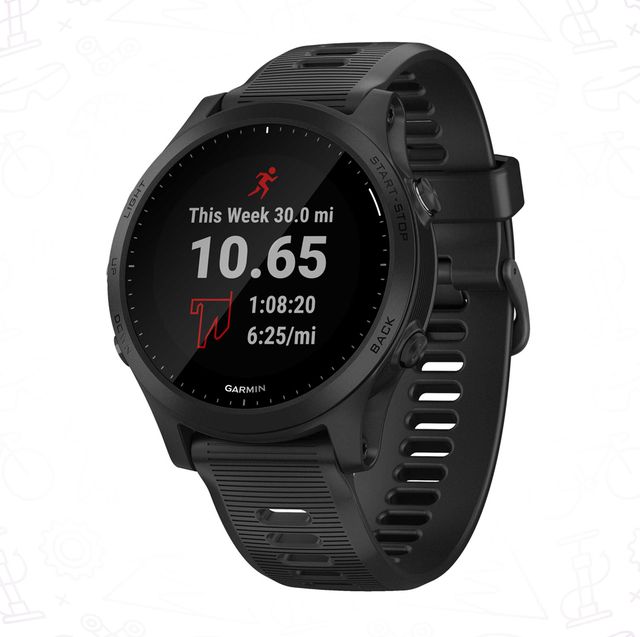
Staff, Courtesy of Garmin
Why should cyclists consider a Garmin smartwatch over a cycling computer? Both have similar functionality but smartwatches offer a number of benefits that cycling computers can’t.
First off, there’s portability. With a Garmin watch, you don’t have to worry about removing your computer from your bike’s handlebars every time you stop to go in a store or when you store your bike at home. But, perhaps more importantly, sport watches are more versatile. They don’t just track cycling, but can also give you a clear picture of your activities and biometrics, help with training and cross-training, play music, provide GPS tracking and location, and some may even serving as a mobile phone.
Garmin’s known for making some of the best smartwatches out there that can integrate with your other devices—not just smartphones—but also ANT+ devices like heart monitors and pedal sensors and Bluetooth devices. Whether you want a simple tracker or an advanced device, these Garmin watches will enhance your performance both on and off the saddle.
Best Garmin Watches
- Most Durable: Garmin fēnix 7 – Solar Edition
- Best for Bikepacking: Garmin Enduro
- Most Cycling Modes: Garmin Instinct 2
- Best for Triathlons: Garmin Forerunner 945
- Best for Casual Cycling: Garmin Venu 2
- Best Small Profile: Garmin Venu SQ
- Most Stylish: Garmin fēnix 6
- Best for Mountain Biking: Garmin Forerunner 745
What to Consider
The right Garmin watch for you depends entirely on your training style and personal needs. A casual biker won’t need the advanced features that triathletes, mountain bike riders, or serious road racers need. Likewise, someone who’s into multiday bikepacking or bike touring trips will have different needs from commuters or more casual cyclists. Before you purchase, make sure you’ve considered the following.
Tracking and/or GPS
Almost all Garmin watches have GPS capabilities. Even those that don’t have GPS sensors can track your routes with a smartphone’s GPS system. Advanced watches can connect to multiple GPS navigation systems and can even allow others to track your progress on a route. Most Garmin watches also have navigation features that can help you get back to where you’re going if you get lost.
Cycling and Activity Modes
All of Garmin’s smartwatches have at least one cycling mode. However, its more advanced watches, like the Fenix series, have numerous biking modes including: Biking, Indoor Biking, Mountain Biking, and Triathlon. These cycling modes contain more nuanced data that you can see while riding and afterward, and include factors like altitude changes, speed changes, and energy output changes, based on more advanced biometrics. If cycling is only part of your active lifestyle and you like to do other activities like swimming, running, skiing, mountaineering, or kayaking, you’ll want a smartwatch with modes dedicated to those activities, as well.
Battery life
If you only plan on using your smartwatch for shorter daily adventures and don’t mind charging it every day, you don’t need a watch with an extended battery life. If you don’t plan on charging it every day or plan on going on long or multiday adventures you’ll need one with a better battery capacity, or one of Garmin’s solar watches, which can charge—at least partially—via the sun.
Biometrics and health tracking features
Almost all smartwatches have some biometric tracking features, like an accelerometer. For cycling, we recommend watches that have at least a heart rate monitor—they’re not as accurate as chest straps but are still a good indication of your heart rate while working out. More advanced smartwatches have additional health tracking features like blood oxygen sensors, respiratory monitors, stress monitors and more. The majority of Garmin’s watches have these sensors, but we’ll point out when they don’t. Garmin watches also feature women’s health tracking features.
Durability
If you’re using a smartwatch chiefly around town, you might not want a heavier, more durable watch like the Fenix, but if you’re doing a lot of activities where you could bash it against walls or rocks, you’re going to want a watch that doesn’t crack under pressure. Most Garmin watches are also rated to 5 ATM, which is suitable for swimming and means they won’t get damaged by sweat or drizzle.
ABC SENSORS
Altitude, barometer, and compass features are essential for navigating bigger adventures. They’re ideal for understanding your altitude, direction, and weather.
Connectivity
Garmin’s smartwatches connect via Bluetooth to your smartphone and its Connect app, which allows it to interact with other apps like Strava and Training Peaks. However, if you’re using other devices, like heart rate monitors or pressure sensors in your pedals, you’ll want to make sure it has ANT+ and/or Bluetooth capabilities to harness that additional information.
Music
Some smartwatches can download music and connect to headphones if you like to listen while riding and don’t want to bring a phone. Not a necessary feature, but a nice one.
How We Selected
Having used various smartwatches and GPS devices from leading manufacturers like Garmin and others while cycling and doing other outdoor activities over the years, we’ve learned what we like and don’t like in a smartwatch and how to use and take advantage of different models’ features. We based our selections and suggested uses based on experience, expert reviews, and customer reviews.
This content is created and maintained by a third party, and imported onto this page to help users provide their email addresses. You may be able to find more information about this and similar content at piano.io
